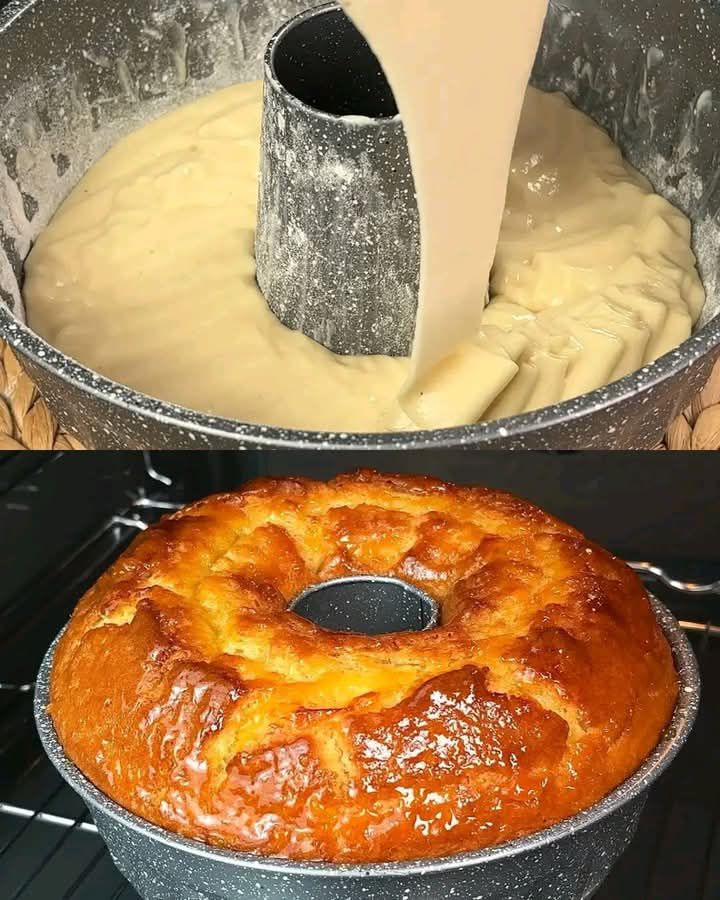Instructions
Prepare the Pan: This step is crucial for a perfect release. Generously brush every crevice of your bundt pan with softened butter, making sure to get into all the intricate details and grooves. Dust the buttered pan thoroughly with flour, tapping out any excess. Alternatively, use a baking spray that contains flour for easier preparation. Place the prepared pan in the refrigerator while you make the batter; this helps the coating set and ensures clean release.
Preheat and Prep: Preheat your oven to 325°F (163°C). Position the oven rack in the lower third of the oven for even baking. In a medium bowl, whisk together the flour, baking powder, and salt. Set aside. Ensure all your ingredients are at room temperature, as this creates a better emulsion and more tender cake.
Cream Butter and Sugar: In a large bowl using an electric mixer, beat the softened butter on medium speed for about two minutes until creamy and smooth. Gradually add the sugar in three additions, beating well after each addition. Continue beating on medium-high speed for four to five minutes until the mixture is very light, fluffy, and pale in color. This extended creaming time incorporates air and creates the cake’s tender texture. Scrape down the sides of the bowl frequently.
Add Eggs: Add the eggs one at a time, beating well after each addition on medium speed. The mixture should be smooth and well-combined after each egg. Don’t rush this step; proper incorporation prevents a dense cake. After all eggs are added, beat for one more minute. Mix in the vanilla extract, almond extract if using, and lemon zest if using.
Combine Wet and Dry: With the mixer on low speed, add the flour mixture in three additions, alternating with the milk in two additions, beginning and ending with flour. Mix each addition until just combined, scraping down the bowl as needed. The pattern should be: flour, milk, flour, milk, flour. After the final addition of flour, mix for no more than ten seconds. The batter should be smooth but slightly thick. Overmixing at this stage develops gluten and creates a tough cake.
Bake: Remove the prepared bundt pan from the refrigerator and pour the batter into it, spreading evenly with a spatula. Tap the pan gently on the counter several times to release any air bubbles. Smooth the top. Bake for sixty-five to seventy-five minutes, or until a wooden skewer inserted into the center comes out clean or with just a few moist crumbs. The top should be deep golden brown and spring back when lightly pressed. Start checking at sixty minutes, as oven temperatures vary.
Cool Properly: This is the most critical step for unmolding success. Let the cake cool in the pan on a wire rack for exactly fifteen minutes. No more, no less. If you unmold too early, the cake may fall apart; too late, and it will stick. After fifteen minutes, place a wire rack over the top of the pan and carefully invert both together. Gently lift off the pan. If any pieces stick, carefully patch them back on while the cake is still warm. Let the cake cool completely on the rack, at least two hours.
Glaze (Optional): If desired, whisk together powdered sugar, milk, and vanilla extract until smooth and pourable. Drizzle over the completely cooled cake, allowing it to cascade down the sides. The glaze adds extra sweetness and a beautiful finish.
Tips for Success
Room temperature ingredients are essential for proper mixing and texture. Don’t skip the thorough pan preparation or the cake will stick. The fifteen-minute cooling time before unmolding is critical.
Storage
Store covered at room temperature for up to four days or refrigerate for up to one week. This cake also freezes beautifully for up to three months.
